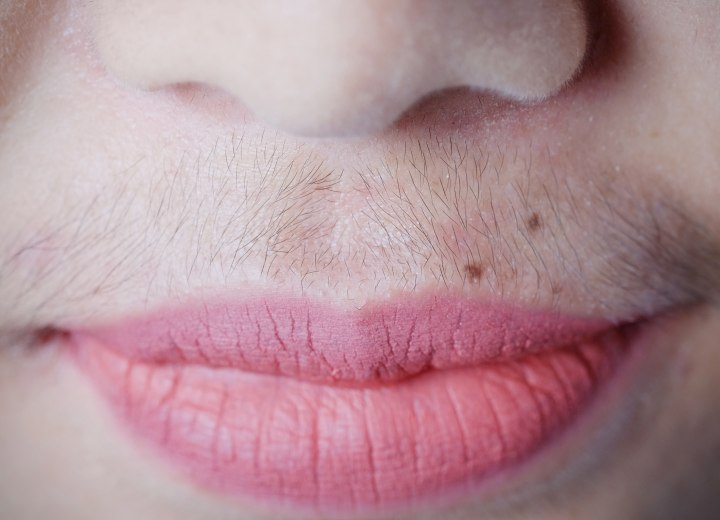Girl with a Moustache

A: You may not have really noticed them before, but you have always had small hairs under your nose, as well as everywhere else on your body. These tiny, translucent hairs are known as vellus hair and everyone has them.
Loss of hair from the head and growth of facial hair and body hair can be triggered by levels of free testosterone in the blood. Only your doctor will be able to tell you whether the increase in hair is a sign of a hormonal imbalance or something particular to your genetic make-up.
If other women in your family have experienced similar situations with hair growth in unwanted areas, there is a good chance that this is just hereditary, but it is better to be safe than sorry if you are concerned over it. Besides, it is almost pointless to pursue treatment of the symptom if you aren't going to address the cause.
Once you've determined that the hair growth is not related to a medical problem (or if it is and is being treated) you can begin to address the symptom and seek out ways to get rid of the unwanted hair. If the hairs are small and fine, but dark in color, some women opt for bleaching the hairs so as to make them invisible. This is typically a simple, if annoying process, but many women prefer it to methods of removal.
The next options are shaving the hairs or waxing. Both of these are useful for removing the hair at the skin's surface, although the hair will grow back and you may experience some itching or possible ingrown hairs as a result. Particularly with shaving, some women claim that the hair grows back thicker, but this is a falsehood. What usually happens is that the new growth of the hair is now tipped with a blunt-cut end which feels stiffer because it hasn't been exposed to daily face washing and abrading and been worn down.
Electrolysis is another technique for hair removal that might be suitable if the hairs are sufficiently large. A very tiny probe is inserted into the follicle of the hair, and an electric current is passed through it which destroys the portion of the follicle that grows new hair cells. Such hair removal is usually permanent, but the treatment may need to be repeated if other hairs begin to darken and convert from vellus hairs to terminal hairs.
Finally, the newest method is laser hair removal, where the dark hairs are basically burned with pulses of laser light destroying the follicles' ability to produce new hair. Laser hair removal is fairly expensive, requires several treatments to be effective and is only suited for certain combinations of skin type and hair type.
©hairfinder.com
See also:
Unwanted hair growth
Abnormal hair growth in women
How can I remove my upper lip hair?
How can I remove my mustache without shaving?